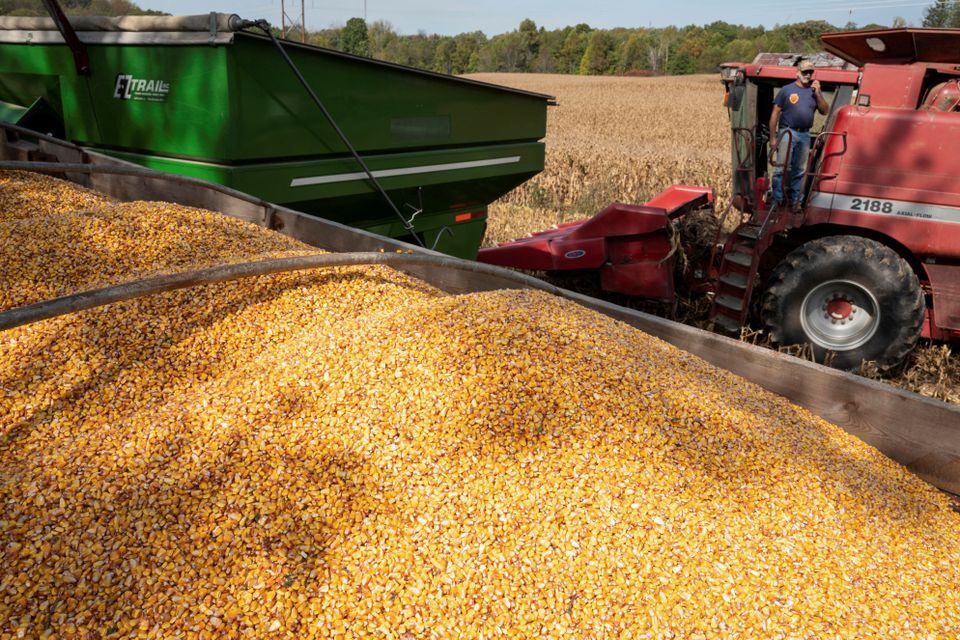With farmers starting to harvest autumn crops that are shipped to meat and biofuels producers, the shipping disruptions could add to already high inflation. Farmers also plan to add fertilizer to fields after the harvest, and shipments of fertilizer are being delayed.
Max Fisher, chief economist at the National Grain and Feed Association, which represents most U.S. grain handlers, said rail customers reported at least one railway would stop taking grain shipments on Thursday morning.
Most major U.S. railways have already stopped accepting new shipments of ammonia fertilizer and other potentially hazardous materials, said Justin Louchheim, senior government affairs director at The Fertilizer Institute, an industry group.
Louchheim said fertilizer producers are now evaluating how much storage they have for ammonia that cannot move by rail, and whether some can move by truck.
The potential rail shutdown looms just six weeks before most Midwest farmers would begin applying fertilizer, said Josh Linville, fertilizer director at StoneX Group. About 40% of the U.S. fertilizer supply is on a rail car at some point before arriving on a farm, he said.
Comment: And so if farmers have to make do with less, it means this will be the second time in the last 9 months that farmers have had to go ahead with their crop without adequate fertilizer, which means that next years crop, like this year's, might be significantly reduced; and with all the catastrophic consequences that entails.
Railroads have until a minute after midnight on Friday to reach tentative deals with holdout unions representing about 60,000 workers.
Comment: So it's because of striking workers that fertilizer's 'potentially hazardous' status is now a problem? Note that 43 rail cars of fertilizer became derailed in Canada in May and there was no fire or explosion reported.
Worries about service interruptions boosted prices for corn-based ethanol at several hubs and kept sellers out of the market, said Josh Pedrick, a managing editor for S&P Global Commodity Insights.
The Association of American Railways (AAR), which represents railroad companies, did not immediately respond to request for comment on grain transportation.
The work stoppage would be keenly felt in states like North Dakota, South Dakota, Minnesota and Nebraska, from which grain is hauled via rail to ports in the Pacific Northwest for export, said Thomas Lahey, domestic freight manager at grain merchandiser Columbia Grain International. Grain elevators in the upper Midwest move soybeans to the PNW mostly via BNSF Railway, Canadian Pacific Railway (CP.TO) and Union Pacific (UNP.N), he said.
U.S. Class 1 railroads transported nearly 1.5 million carloads of grain in 2020, including 691,000 carloads of corn, 340,000 carloads of soybeans and 248,000 carloads of processed soybeans like soymeal and soyoil, AAR said.
ENOUGH ANIMAL FEED?
U.S. chicken producers rely on about 27 million bushels of corn and 11 million bushels of soymeal every week to feed their birds, the National Chicken Council said. Much is moved by rail.
"Any disruption of service could negatively impact the welfare of the birds, and ultimately impact production at a time when Americans are already dealing with record food inflation," council spokesman Tom Super said.
In North Carolina, a pork and poultry producer, local grain growers do not produce enough corn to feed all the farm animals, said Bob Ford, executive director of the North Carolina Poultry Federation.
"We'd be in trouble if they went on strike for very long," Ford said. "We'd run out of corn."
Wayne-Sanderson Farms, a Georgia-based chicken company owned by Cargill Inc and Continental Grain, is working with local corn producers to augment feed supplies if needed during rail disruptions, spokesman Frank Singleton said.
The beginning of corn harvesting in the southern United States, a main poultry region, "will relieve some of the pressure" on feed supplies, he said.
Some rail customers that feed livestock do not have enough soymeal, said Fisher, of the National Grain and Feed Association. In a worst case scenario, that could force some producers to cull animals.
Comment: There's a tipping point where so many animals are culled that recouping stock will take so long that businesses will go bankrupt and people will be forced to go hungry. And this is just one cull of many happening, or scheduled to go ahead, across much of the West: 200,000 pigs in the UK; 12 million chickens in the US; 140,000 heads of cattle in Italy; 450,000 pigs in South Korea; the list goes on.
Railroads also ship hexane, a chemical solvent that crushers use to extract oil from soybeans, said Mike Steenhoek, executive director of Soy Transportation Coalition.
"Any slowdown or stoppage of rail service - especially on the eve of harvest - would significantly impact farmers' ability to meet customer demand - both domestically and internationally," Steenhoek said.




Comment: Meanwhile Russia is diverting huge amounts of fertilizer to the developing world after the West rejected them due to their failing sanctions regime: